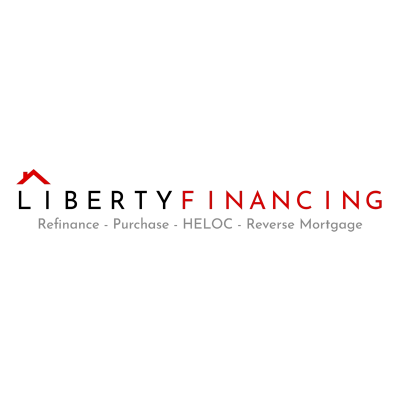7 Tips for Refinancing in the Current Mortgage Rate Environment
Navigating the complex landscape of refinancing can seem daunting, but with expert insights, the path becomes clearer. This article demystifies the process, presenting critical tips from industry professionals to guide homeowners through the current mortgage rate environment. Armed with knowledge from those who know the market best, making informed refinancing decisions is within reach.
- Focus on Long-Term Goals, Not Just Rates
- Choose the Right Loan for Your Needs
- Weigh Savings Against Refinancing Costs
- Align Refinancing with Financial Objectives
- Calculate Break-Even Point Before Refinancing
- Compare Total Costs, Not Just Interest Rates
- Assess Long-Term Impact of Refinancing Decision
Focus on Long-Term Goals, Not Just Rates
If you are considering refinancing in the current environment, my advice would be to focus less on pursuing the lowest possible rate and more on your long-term goals. Ask yourself what you are trying to accomplish. Are you aiming to lower monthly payments, pay off loans faster, or extract equity? Let that guide your decision. Rates are still fluctuating, so timing is important, but it's just one aspect of the overall picture.
When I refinanced, the rate wasn't the lowest I had ever seen, but the new loan helped free up monthly cash flow and provided us with the means to undertake some home improvements without overextending ourselves. It made sense for our situation, even if the rate wasn't at its absolute lowest. Therefore, be realistic about the numbers, consider your complete financial picture, and don't delay too long if the current terms already align with your goals!

Choose the Right Loan for Your Needs
If you're considering refinancing your mortgage with today's rates, here are a couple of things to keep in mind to ensure you get the best deal and a smooth process:
Understand why you're refinancing - Is it to obtain extra cash or to lower your interest rate? This will help you choose the right loan. For example, if you need $10,000 in cash, a HELOC might be a good choice. For $100,000, refinancing could be better. If your current rate is higher than today's rates, either option might work for you.
Shop around for a trusted loan officer - Pay attention to discount points and lender fees. Mortgage brokers usually offer lower rates and fees. Ultimately, it's your responsibility to make a smart financial decision for your family and your home.
In the end, it's important to understand as much as possible about this process to help ensure that you get a good deal.

Weigh Savings Against Refinancing Costs
One key piece of advice for someone considering refinancing their mortgage in the current rate environment is to carefully evaluate whether the savings from a lower interest rate outweigh the costs associated with refinancing. This includes factoring in closing costs, loan terms, and how long you plan to stay in the home.
For example, if you're refinancing to lower your monthly payment, ensure that the break-even point—when your savings surpass the refinancing costs—aligns with your future plans. Additionally, consider whether a shorter loan term or switching from an adjustable-rate to a fixed-rate mortgage could provide long-term financial benefits.
If you've refinanced before, you may have experienced how locking in a lower rate at the right time can lead to significant savings over the life of the loan. However, if rates are expected to drop further, it may be worth monitoring the market before committing. Consulting a mortgage professional can help you weigh your options and determine the best strategy for your situation.
Align Refinancing with Financial Objectives
One piece of advice I'd give to someone considering refinancing in today's rate environment is to focus less on chasing the lowest rate and more on your overall financial goals. With rates higher than in previous years, refinancing only makes sense if it helps improve monthly cash flow, consolidate debt, or shorten your loan term without putting strain on your budget.
When I refinanced, it wasn't just about the rate--I looked at how the new loan would impact my long-term equity, monthly payment, and break-even point after closing costs. That analysis helped me avoid refinancing just for the sake of a slightly better rate.
In today's market, my advice is to run the numbers carefully, consider how long you'll stay in the home, and talk to a lender who can help you explore creative options like rate buydowns or shorter-term loans. Refinancing can still make sense--but only if it aligns with a clear, long-term plan.
Calculate Break-Even Point Before Refinancing
One piece of advice I'd give to someone considering refinancing their mortgage is to carefully run the numbers and compare the total costs, not just the interest rate. While lower rates can be tempting, refinancing comes with fees such as closing costs, appraisal fees, and potential penalties for breaking your current loan. Make sure the savings outweigh these costs before moving forward.
If you plan to stay in your home long enough to recoup the refinancing costs, it can be a smart move. I've seen homeowners lower their monthly payments or switch to a shorter loan term, saving thousands in interest over time. Talking to a mortgage broker or financial expert can help ensure refinancing is the right decision based on your long-term goals.

Compare Total Costs, Not Just Interest Rates
Refinancing a mortgage can feel like navigating a labyrinth, especially with fluctuating interest rates. One crucial piece of advice is to carefully evaluate the break-even point—the time it takes for the savings from the lower interest rate to cover the costs of refinancing. This calculation not only clarifies the financial implications but also helps you make a decision that aligns with your long-term financial goals. For instance, if you plan to move in a few years, the costs may outweigh the benefits, making refinancing less appealing.
When I refinanced my home last year, I closely monitored interest rates and consulted with several lenders to secure the best deal. This comparative approach enabled me to leverage competitive offers and ultimately lock in a rate that significantly lowered my monthly payments. It's also vital to maintain a good credit score, as it heavily influences the rate you're offered. Remember, refinancing can be a powerful tool to reduce your monthly expenses and accelerate mortgage repayment, but it's essential to do thorough research and understand your own financial landscape before diving in. This approach ensures the move will benefit your financial situation in the long run.

Assess Long-Term Impact of Refinancing Decision
If you're considering refinancing your mortgage in the current rate environment, the key piece of advice I would give is to carefully assess whether the potential savings outweigh the costs and long-term impact. Interest rates may not be as low as in previous years, but depending on your financial situation, refinancing could still make sense, especially if you have high-interest debt, an adjustable-rate mortgage, or need to shorten your loan term.
Before refinancing, make sure you're clear on the fees and closing costs involved—sometimes these can negate the savings over the life of the loan. Also, consider how long you plan to stay in the home. If you're thinking of moving soon, refinancing may not be worth it since it could take years to break even on the costs.
I've refinanced myself and found it beneficial when I was able to lower my rate and consolidate some debt. But it took a bit of research to find the right lender and figure out the math behind the decision. Make sure you shop around for the best deal and consider working with a financial advisor if you're unsure about your options.




